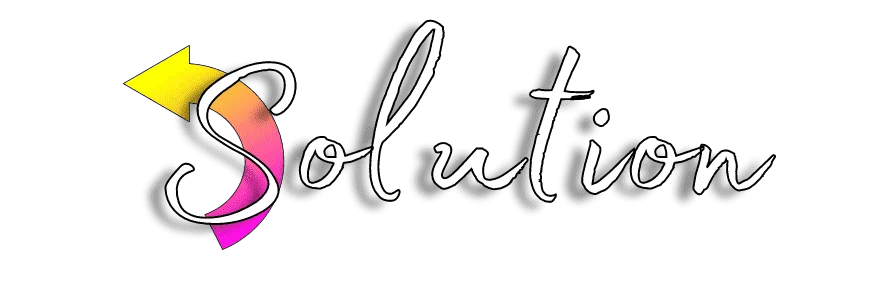
Every day, we engage in various mindless behaviours – for example, biting our nails during meetings, reaching for snacks when we’re anxious, or mindlessly reading through social media before going to sleep. Our habits are the routines we do automatically, molded by the power of reward and repetition. Some are helpful, while others subtly undermine our progress toward our objectives and the quality of our lives.
How might we effectively address unproductive behaviors, and what makes them challenging to change?
Behavioural science steps in with its examination of real-world decision-making and behavior. Behavioral science, in contrast to the fleeting nature of willpower, offers methods grounded in economics, neuroscience, and psychology that have the power to rewire our habits from within. Being smarter, not harder, is what it takes to make a lasting difference, as this shows.
Continue reading as we explore the psychology of habit formation and the proven strategies for overcoming harmful habits by utilizing loops, triggers, friction, and incentives. You will learn about redesigning your surroundings, creating better defaults, and establishing a system where good conduct becomes the easiest option.
If you want to make a difference in your life, whether it’s by eating better, spending less time in front of the screen, or even just not sleeping in, behavioral science can show you the way.
Also Read: Therapy: Relax Your Mind and Body
7 Ways to Break Bad Habits Like a Pro
Breaking a harmful habit requires more than just sheer willpower. Better tactics to break harmful habits and plan your day for success are available to you with the help of behavioral science. To help you regain control and establish healthier habits, we have compiled seven effective strategies supported by science.
1. Rewire the Habit Loop
A cue-routine-reward cycle undergirds all habits. Changing the pattern while retaining the signal and reward can be just as effective as eliminating the habit entirely when trying to break a bad one. In other words, when you’re bored (the trigger), your habit is to scroll through social media (the reward). Take a short stroll, stretch, or even just pick up the phone instead of scrolling.
Without engaging in the counterproductive behavior, you are still providing yourself with a stimulus. When you learn this cycle and make adjustments, your habits will go from being automatic to being deliberate.
You can quickly intercept your behaviors with wiser alternatives that fulfill the same craving if you track them to find patterns.
2. Add Friction to the Bad Habit
A lack of effort fosters bad habits. We are more prone to fall for them if they are easy to reach. Applying “friction”—little impediments that make the undesirable habit more challenging to carry out—is recommended by behavioral scientists.
Are you striving to reduce your late-night internet sessions? Move to a different room to charge your phone. Are you making an effort to restrict processed foods? It has no place in your home. The point isn’t to eliminate temptation, but to reduce the rate of behavior to give your brain a chance to make a different decision.
Taking a brief stop can help you deactivate autopilot and make more deliberate choices.
Also Lookup: Digital Detoxing for Enhancing our Mental Health
3. Design an Environment for Success
We tend to fail to recognise the extent to which our environment impacts our actions. Minor adjustments to your surroundings can result in significant changes to your habits. Do you wish you drank more water?
Always have a bottle nearby. Need help quitting nail biting? To the nails, apply a solution that tastes bitter. Your brain is hardwired to take the easiest route; to counteract this, highlight your excellent decisions and hide your negative ones.
The term for this method is “choice architecture,” and it lets you improve your habits unconsciously.
4. Incorporate Intuitive Bundling
The idea behind temptation bundling is to combine a habit you wish to form with something you now love doing; this strategy is effective because it takes advantage of your current drives. Just because you’re exercising doesn’t mean you can’t listen to your favorite podcast or watch your favorite TV show.
This technique, which has its origins in behavioral economics, makes it very difficult to say no to a habit you would otherwise want to form. Instead of dreading activities you previously disliked, you’ll begin to look forward to them after this technique transforms discipline into passion.
5. Decrease Recurrence
Making a hasty decision to change a habit is a dangerous idea. Minimal viable behavior is the term used by behavioral scientists to describe the process of reducing a habit to its most basic, workable form.
To begin, try something like, “I’ll put on my running shoes and walk for 5 minutes instead of, “I’ll run 5 kilometers every morning.” It could be overly simple, but that’s the point: momentum is key.
Once a habit becomes automatic, your brain stops attempting to break it. Without feeling overwhelmed or burned out, these incremental victories build up to a massive shift over time.
6. Monitor and Rejoice in Succeeding
Measuring what you handle is crucial. Keeping tabs on your habits makes your development obvious, which in turn strengthens your sense of self. You can keep track of your accomplishments with a basic journal, app, or calendar.
Simply crossing an item off a list releases a small amount of dopamine into the brain, which acts as a reward. To the mix, throw in some minor rewards like a grin, a “yes!” or a fist pump to really cement the behavior.
Success fuels motivation, which in turn fuels even more success, creating a self-reinforcing cycle that continues throughout time.
7. Take on a New Persona
Altering one’s self-perception is among the most effective methods for quitting smoking. Use the phrase “I’m not a smoker” to avoid seeming like you’re trying to break the habit. Because they are congruent with one’s self-perception, identity-based habits tend to endure longer, according to behavioral science. Changing one’s behavior isn’t the point; being different is.
Begin with something simple, like “I’m someone who doesn’t procrastinate” or “I’m the type of person who takes care of their health.” Your new identity will gradually become your reality when your behavior becomes consistent with your statements.
Recommend Post:- Self-Care Habits to Improve Mental Health
Conclusion
Designing better processes is more effective than exhibiting superhuman willpower when it comes to breaking undesirable behaviors. We can subtly steer ourselves away from destructive behaviors and toward long-term transformation by making the appropriate adjustments to our surroundings, attitude, and habits, according to behavioral science.
The trick is to make healthy habits easy and bad habits hard, whether you’re trying to eat better, quit hitting snooze, or restrict late-night browsing. Change your self-perception first and foremost; next, take baby steps and reward yourself when you reach milestones. When you break a harmful habit, you transform into a new person.
Consequently, take small, deliberate steps toward creating the life you truly desire by being compassionate, inquisitive, and using science as your hidden weapon.


